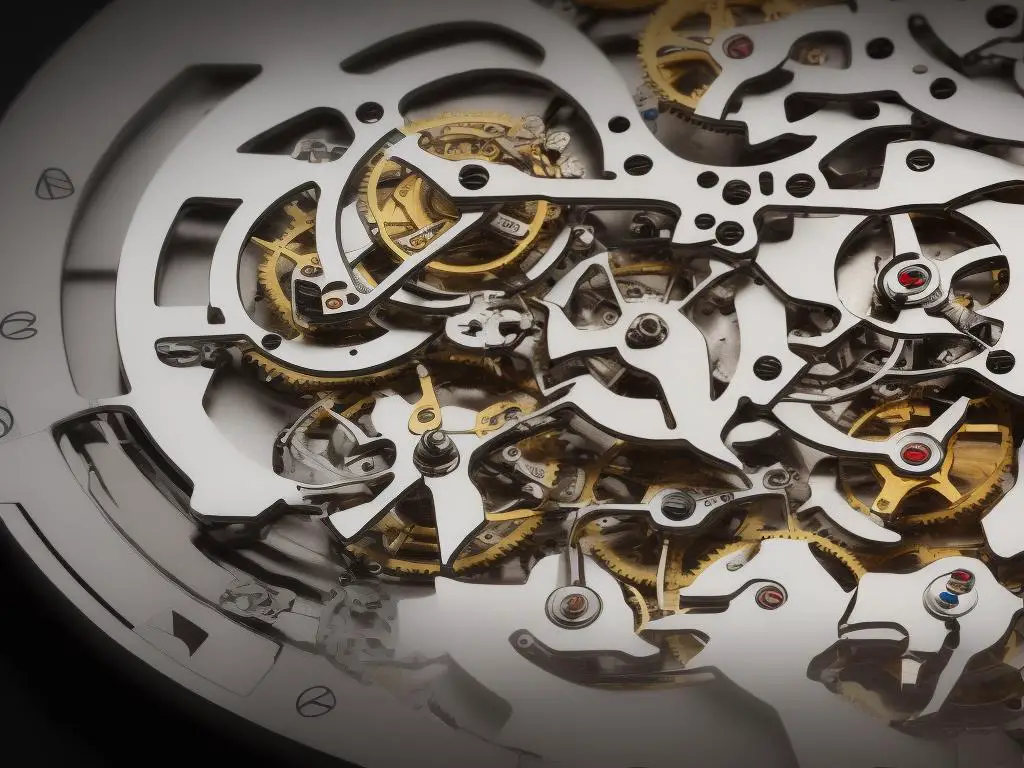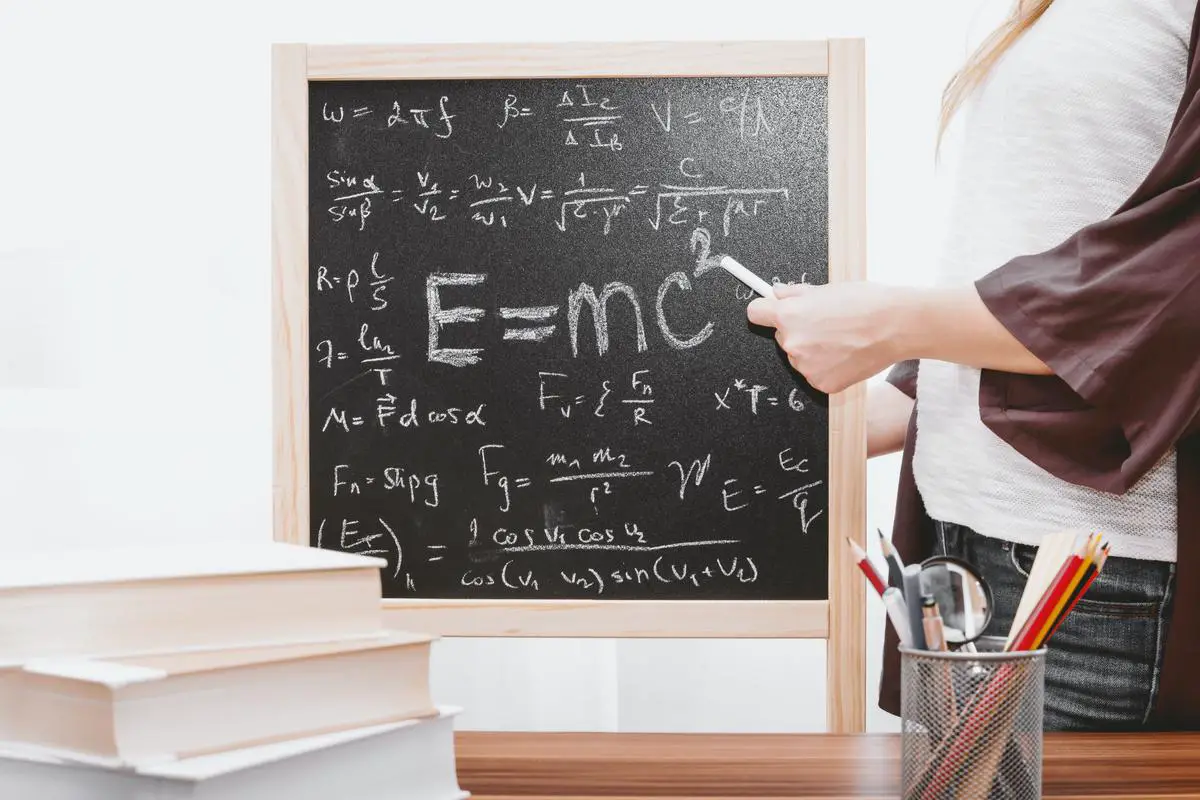Time travel has ignited the imagination of countless people, sparking endless conversations about its potential implications, paradoxes, and place within popular culture. With a diverse array of theories and ideas, time travel continues to be a captivating and controversial topic both within science fiction and real-world explorations. This essay embarks on a journey through the history of time travel, the scientific underpinnings of various theories, the moral quandaries it presents, its impact on literature and film, and a look at the latest research propelling humanity’s dreams of traversing the temporal landscape.
Understanding Time Travel
The Concept of Time Travel
Time travel has been a fascinating subject in science fiction and popular culture for centuries. The idea of traveling through time, either to the past or the future, has captivated the imagination of both scientists and ordinary people alike. This may be attributed to the human tendency to wonder about the mysteries of the past and the possibilities of the future. The concept of time travel can be traced back to ancient myths like the Hindu story of King Revaita and the tale of the Japanese fisherman Urashima Taro.
Time Travel Theories
Over the years, various theories have been proposed to understand the possibilities and implications of time travel. One of the most famous theories is Albert Einstein’s Theory of Relativity, which suggests that time dilation could occur when an object reaches velocities close to the speed of light.
Another popular concept in time travel theories is the idea of wormholes, which are hypothetical tunnel-like connections through spacetime. Wormholes are theorized to link two separate points in space and time, allowing for faster-than-light travel between them. If wormholes do exist, they could potentially allow for not only interstellar travel but also time travel. However, the existence of wormholes remains speculative and unproven.
Parallel Universes and Alternate Timelines
In exploring the idea of time travel, the concept of parallel universes and alternate timelines plays a crucial role. Parallel universes are thought to be alternate realities that exist alongside our own, with different versions of events and outcomes.
Alternate timelines, on the other hand, are a concept frequently used in time travel fiction. They depict the idea that traveling back in time and changing events may create a new timeline that diverges from the original timeline. This concept often forms the basis for stories exploring the “what if” scenarios of history and the consequences of altering the past.
Time Loops
Another fascinating aspect of time travel is the time loop, which is a concept where a person or series of events becomes trapped in a repeating cycle of time. Time loops are often depicted as inescapable, forcing the characters involved to find a way to break the cycle to regain control of their lives. The idea of time loops has been widely explored in literature and films, such as “Groundhog Day” (1993) and “Edge of Tomorrow” (2014).
Time Travel in Popular Culture, Literature, and Film
The fascination with time travel has led to numerous portrayals in popular culture, literature, and films. Classic science fiction novels, such as H.G. Wells’ “The Time Machine” (1895) and Kurt Vonnegut’s “Slaughterhouse-Five” (1969), have played a significant role in shaping our understanding of time travel and its potential consequences.
Films, too, have frequently explored the concept of time travel, sometimes focusing on the adventure and excitement of journeying through time, while others offer cautionary tales about the dangers of altering the past. Examples of popular time travel films include “Back to the Future” (1985), “12 Monkeys” (1995), and “Looper” (2012).
The Enduring Fascination of Time Travel
The concept of time travel has captivated human imagination for centuries, appearing in countless works of literature, film, and popular culture. Despite the ongoing scientific exploration of time travel and related concepts, the act of traversing through time remains a unattainable dream for mankind. Nevertheless, our enduring fascination with understanding the mysteries of the past and exploring the limitless possibilities of the future continues to propel our curiosity and drive scholastic inquiry.

Physics and Time Travel
Einstein’s Theory of Relativity and Time Travel
Albert Einstein’s groundbreaking theory of relativity, published in 1905, initiated a fundamental shift in our understanding of time and space. The theory consists of two parts: special relativity and general relativity. Special relativity demonstrated that time and space are interwoven, creating a four-dimensional continuum known as spacetime. General relativity expanded upon this by revealing that spacetime is curved by the presence of massive objects, like stars and planets.
Einstein’s theory introduces several implications in relation to time travel, with the phenomenon of time dilation being a key example. Time dilation posits that the passage of time varies, depending on an object’s speed and the strength of the surrounding gravitational field. As an object approaches the speed of light, time slows down for that object in comparison to an observer at rest. Similarly, time passes more slowly for an object situated within a stronger gravitational field. These concepts, while not providing mankind a direct method of time travel, have broadened our understanding and fueled further exploration of the subject.
Wormholes and Time Travel
The most popular concept associated with time travel in physics is the wormhole, sometimes also called the “Einstein-Rosen bridge.” Wormholes are theoretical structures within spacetime that connect two separate points in space and time. In essence, a wormhole serves as a shortcut between locations in the universe.
Wormholes are derived from Einstein’s general relativity equations and remain purely theoretical. Some physicists believe that if wormholes exist and can be stabilized, it could be a potential method for time travel. Entering one end of a wormhole, an individual could theoretically exit at a different location in spacetime.
However, stabilizing a wormhole presents an enormous challenge. Wormholes are incredibly unstable and would require a form of “exotic” matter with negative energy density to keep them from collapsing. The existence of such matter remains speculative, and currently, no method exists to create or stabilize wormholes.
Time Dilation and Traveling Into the Future
While time travel into the past remains uncertain, there is some scientific feasibility for traveling into the future using the concept of time dilation. As mentioned earlier, time dilation occurs due to the effects of relative velocity and gravity on the passage of time.
One of the most famous examples illustrating time dilation is the so-called “twin paradox.” In this thought experiment, one twin travels on a spacecraft near the speed of light, while the other remains on Earth. Upon the traveler’s return, they would find their Earthbound twin has aged more than they have, effectively demonstrating that the traveling twin has “traveled into the future.”
In practical terms, time dilation has been observed through experiments using fast-moving atomic clocks demonstrating that time does indeed pass slower for objects moving at higher velocities. Although traveling near the speed of light is far beyond our current technology, the underlying principle demonstrates that, in theory, time travel to the future is possible.
The Reality of Time Travel
As we currently comprehend physics, journeying back in time remains an aspect of science fiction. Theoretical concepts such as wormholes and closed timelike curves have not been proven to exist, and even if they did, the energy and technology required would be well beyond our present capabilities.
Conversely, traveling into the future has some basis in the well-documented phenomenon of time dilation. Nonetheless, the velocities or gravitational forces necessary to experience significant time dilation effects are unattainable with today’s technology. Nevertheless, the scientific principles underlying time travel into the future are well-established and invite further investigation and exploration.
In conclusion, although time travel enthralls our imagination and permeates various aspects of popular culture, the scientific reality differs greatly from this captivating dream. Continuing to delve into the fundamental principles and their potential implications for future findings remains essential. Simultaneously, the dream of time travel continues to spark scientific curiosity and motivate the upcoming generation of physicists and inventors.

Potential Implications and Paradoxes
The Butterfly Effect
Often utilized in chaos theory, the butterfly effect illustrates how minute changes within a system can result in drastically different outcomes. It earned its name from the notion that the flap of a butterfly’s wings in Brazil might trigger a series of events culminating in a tornado in Texas. Within the context of time travel, the butterfly effect implies that any seemingly insignificant change made in the past could cause unpredictable, and potentially disastrous, repercussions in the future.
For instance, if a time traveler ventured into the past and unintentionally crushed a bug, that bug’s absence might initiate a domino effect throughout the ecosystem, ultimately altering the progression of history. This scenario presents numerous ethical quandaries: If we could travel back in time and modify events, should we? Is it feasible to foresee the consequences of our actions, and are we prepared to bear the responsibility of potentially changing the lives of countless individuals?
The Grandfather Paradox
The grandfather paradox is a well-known thought experiment that highlights the logical contradictions that can arise when considering time travel. In this scenario, a person travels back in time and kills their own grandfather before he conceives the time traveler’s parent. This action would prevent the time traveler’s birth, but if the traveler was never born, how could they have gone back in time to kill their grandfather in the first place?
This paradox raises questions about the nature of time and causality, potentially suggesting that time travel could create alternate timelines or parallel universes in which different outcomes occur. It also highlights the potential dangers and ethical dilemmas involved in changing the past; if we were able to alter events, should we? What potential consequences might arise from such actions, and how can we be sure that we’re making the right decision?
Other Logical Conundrums
There are several other logical paradoxes and conundrums that can arise when discussing time travel. For example, the bootstrap paradox occurs when an object or information is sent back in time, creating a closed loop in which it has no beginning or end. The classic example of this is a time traveler who gives their younger self a book, which they eventually grow up to write based on the information they received from the older traveler.
Another example is the “predestination paradox,” in which a time traveler’s actions in the past may ultimately lead to the very event they were attempting to prevent. For instance, a time traveler could go back in time to stop a catastrophic event from happening, only to accidentally cause that event to occur with their own actions.
Implications and Paradoxes
As we delve into the intriguing concept of time travel, it’s essential to explore the logical and ethical dilemmas that arise from the potential consequences and responsibilities associated with altering the past. Even the most well-intentioned actions can have far-reaching and potentially disastrous effects when dealing with a concept as complex and unpredictable as time’s passage.
By examining these implications and paradoxes, time travel captivates our imagination while also challenging us to weigh the potential achievements against the ethical responsibilities and possible consequences of our actions. As advancements in science and engineering continue to bring us closer to realizing time travel, our discussions must also delve into the moral implications and potential paradoxes of such discoveries. Ultimately, the allure of time travel, while undoubtedly fascinating, serves as a poignant reminder of the immense responsibility and forethought necessary when considering any potential manipulation of history and the fabric of time itself.

Famous Time Travel Stories and Their Impact
Early Exploration of Time Travel: The Time Machine by H.G. Wells
In 1895, H.G. Wells published one of the earliest and most famous time travel stories, “The Time Machine.” This groundbreaking novel introduced the notion of a machine capable of transporting its user through time, specifically forwarding them to a distant, post-apocalyptic future in England. The protagonist, known only as the Time Traveller, embarks on a journey where he encounters two distinct races, the Eloi and the Morlocks, while navigating themes of social Darwinism, unchecked capitalism, and class divisions.
“The Time Machine” played a significant role in shaping society’s understanding of time travel, as the concept of a physical machine enabling such journeys has since become a mainstay in numerous science fiction works. Wells’ influential novel also laid the foundation for future time travel stories, many of which delve into alternative futures and the ramifications of tampering with the past.
A Connecticut Yankee in King Arthur’s Court by Mark Twain
Another early time travel story is Mark Twain’s “A Connecticut Yankee in King Arthur’s Court,” published in 1889. The protagonist, Hank Morgan, finds himself transported to sixth-century England through a blow to the head. While not involving a machine like Wells’ story, it still presents the concept of time travel – though in a more fantastical, supernatural manner.
In King Arthur’s Court, Morgan uses his 19th-century knowledge and skills to introduce technology to the medieval inhabitants, ultimately causing the collapse of Arthurian society. This novel’s influence lies in its satirical take on time travel, where it is used as a vehicle for social commentary on the pitfalls of industrialization and the potential corrupting influence of modern technology on a simpler way of life.
La Jetée
The 1962 French film “La Jetée” further evolved the concept of time travel in popular culture. This science fiction short film tells the story of a post-apocalyptic future where survivors are forced to live underground due to the devastating effects of nuclear war. Experimentation with time travel is conducted in hopes of finding a solution to humanity’s dire predicament. An unnamed protagonist is chosen for the experiments due to his strong mental connection to a specific childhood memory, which ultimately brings him face-to-face with the reality of time’s cyclical nature.
“La Jetée” has had a significant impact on many science fiction films and stories that followed, as it popularized the notion that the mind could be a conduit for time travel. It has inspired multiple film adaptations, most notably the 1995 film “12 Monkeys” by Terry Gilliam.
Back to the Future Trilogy
The “Back to the Future” film trilogy, directed by Robert Zemeckis and released between 1985 and 1990, is arguably one of the most recognizable and beloved popular time travel stories in modern times. The films follow the adventures of teenager Marty McFly and eccentric inventor Doc Brown as they traverse space and time in a modified DeLorean sports car. The trilogy explores multiple timelines and potential consequences of altering the past, often employing humor and adventure as vehicles for storytelling.
The “Back to the Future” trilogy has left a significant imprint on popular culture and society’s understanding of time travel. The films’ often lighthearted and comedic approach has made the concept more accessible to a broad audience, inspiring countless other film and television series exploring time travel to various degrees.
Doctor Who
One of the driving forces behind popular culture’s understanding of time travel is the long-standing British television series “Doctor Who,” which premiered in 1963. The main character, known as the Doctor, is an alien Time Lord who journeys through time and space in a ship called the TARDIS, frequently accompanied by human companions. The show has delved into numerous aspects of time travel and its potential consequences, from the paradoxes of altering personal timelines to the moral dilemmas of preventing disasters while changing history.
Thanks to its intricate and engaging storylines and its loyal fan base, “Doctor Who” has greatly impacted society’s view of time travel and its possible implications. The show has inspired countless spin-offs, novels, comic books, and fan fiction, emphasizing its immense influence on the genre in general.

Future of Time Travel Research
Theoretical Foundations of Time Travel
Inspired by captivating narratives like “Doctor Who,” the general public, as well as researchers and scientists, have shown a great interest in time travel. This fascination can be credited to our inherent curiosity about our past and our eagerness to explore possible futures. Central to the understanding and investigation of time travel is the field of theoretical physics and the part that space-time plays in our universe.
One of the most crucial theories in support of the concept of time travel is the General Theory of Relativity, proposed by Albert Einstein. This theory proposes that time serves as a fourth dimension and is interwoven with space, creating a fabric known as space-time. The distortion of space-time due to massive objects like planets and stars results in the phenomenon of gravity. As a consequence, time slows down in regions with stronger gravity.
The comprehension of the connection between gravity and time has led to the study of time dilation—the idea that time passes differently for objects moving at various speeds or experiencing different gravitational forces. This phenomenon has been proven through experiments using atomic clocks and GPS satellites, which must routinely correct for time dilation to maintain their accuracy. However, the science behind the portrayal of time travel in popular culture remains elusive.
Scientific Developments and Breakthroughs
Presently, researchers and scientists are investigating various phenomena and theoretical constructs that could potentially enable time travel. Some key discoveries and concepts include:
- Wormholes: Hypothesized by Albert Einstein and Nathan Rosen, wormholes are bridges connecting separate points in space-time. If traversable wormholes could be discovered or created, they could potentially allow for travel to distant regions of space or time.
- Cosmic Strings: Cosmic strings are hypothetical, one-dimensional objects with immense mass and gravitational pull, which can warp space-time around them. It has been proposed that if two of these strings were to pass close to each other, they could create a loop in space-time, allowing travel backward and forwards through time.
- The Alcubierre Drive: This theoretical concept was developed by physicist Miguel Alcubierre and involves the manipulation of space-time. By compressing space-time in front of a spaceship and expanding it behind, a “warp bubble” could be created, enabling travel at faster-than-light speeds without violating the laws of physics.
- Quantum Mechanics and Parallel Universes: The multiverse theory suggests that there may be an infinite number of parallel universes that exist alongside our own. Quantum mechanics, specifically the concept of superposition, has led some researchers to explore the possibility of travel between these parallel universes and potentially even different time periods.
Potential Challenges and Applications
The realization of time travel would likely pose numerous ethical, philosophical, and technological challenges, such as the possibility of altering the past and its impact on the present. Moreover, the creation of stable wormholes or harnessing the power of cosmic strings would require unprecedented advances in our understanding of physics and technology. Consequently, the feasibility of time travel remains a topic of much debate and speculation.
Nevertheless, even if time travel were to become a reality, its applications could be vast. In addition to facilitating exploration of the past and the potential for altering the course of history, it could also enable the investigation of future events, informing decisions and actions in the present. Furthermore, insights gained from time travel could enhance our understanding of the universe, the origins of life, and the nature of reality itself. As the dream of time travel continues to inspire researchers and scientists, it remains an enduring symbol of human curiosity and our desire to advance our understanding of the cosmos.

Ultimately, the quest for understanding time travel reflects humanity’s innate thirst for knowledge and our eagerness to unlock the mysteries of the universe. As we continue to delve into the world of time travel, scientific advancements, and theoretical breakthroughs, it is crucial to remain mindful of the potential ethical implications and paradoxes that could arise. Whether time travel remains within the realms of fiction and theoretical physics or one day becomes a tangible reality, it will undoubtedly continue to enthral, inspire, and challenge our understanding of our existence in the fabric of spacetime.
